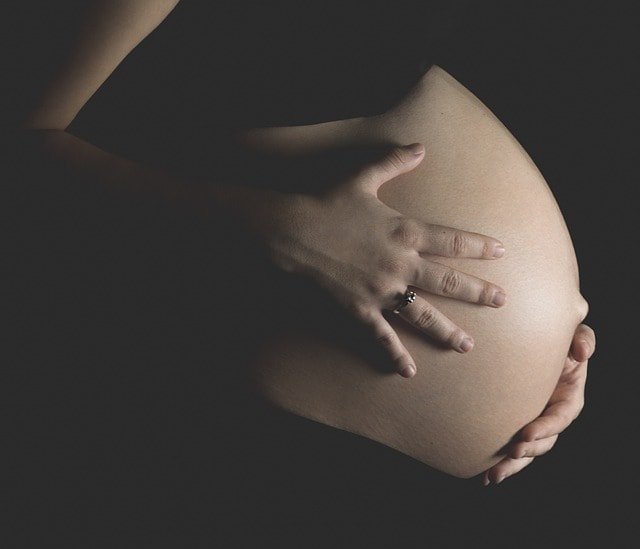 Labor and birth will differ with each pregnancy.
Labor and birth will differ with each pregnancy.
Some women will go through the typical course of labor, others will experience delayed labor probably forcing the doctor to induce, while others will experience precipitous labor, which is the medical term for rapid labor.
Before you get all excited that your labor could actually be precipitous, you need to understand that there are some drawbacks linked to birthing your child quickly.
Either way, regardless of the type of labor you go through, no need to fret!
You can expect to have a healthy birth.
If you give birth to your little one within three hours of the contractions starting, then the labor is termed as a precipitate.
Normally two in a hundred women whose labors have begun naturally will have a rapid or precipitous labor.
Some women, who experience rapid labors, as a matter of fact, are not even aware that they’re in labor until the last minute. (Feels easy I know!)
It is thought that their uterus painlessly contracts and therefore, they can’t feel the contractions at all during their first stage of labor.
If at all this happens to you, the first hint that your baby is on the way will probably come once you enter the second stage of labor.
At this point, you start feeling the urge to push or could even feel the baby’s head descending.
For other women, however, they experience powerful and frequent contractions right from the beginning although their labor is short.
Normally, you’d expect your contractions to gradually build up over the course of a few hours but that isn’t always the case.
Causes of Precipitate Labor
No one knows for certain why some women experience faster labors compared to others.
Sometimes, it just runs in the family- if your mom, grandma or a sister experienced precipitate labor, you probably won’t be left out.
However, there isn’t conclusive research into the cause of precipitate labor which determines that this is the case.
Other causes include:
- Birth of a baby consider smaller than average
- A history of previous rapid labor
- An excessively compliant birth canal
- An exceptionally efficient uterus which contracts with immense strength
In some cases, very fast labor can supersede other symptoms in your pregnancy. The types of complications linked to rapid labor include:
- Placental abruption
- Prostaglandin-induced labor could also hasten the labor
- Chronically high blood pressure
- Rapid labor can also be experienced in someone who used fertility treatments to conceive the baby.
Signs and Symptoms of Precipitous labor
Although the signs and symptoms may vary from person to person, these are the most common signs and symptoms:
- Sudden onset of closely timed, intense contractions which barely give you a chance for recovery in between contractions.
- Very intense pain that feels as if it’s one never-ending contraction allowing no recovery time.
- A sensation of pressure which includes the urge to push and it comes on very fast and without warning. It can be defined as bearing down and resembles a feeling like that of a bowel movement. Most times, this symptom isn’t accompanied by contractions since your cervix will dilate very fast.
Complications Associated With Precipitous Labor
For Mother:
The most common complication is the profound effect the labor has on your emotions. You will probably find yourself recovering from a powerful adrenaline high after giving birth.
Trauma or depression is completely normal due to the speed of the birth experience, therefore, experience difficulty coping after the delivery Which means recovery takes longer.
Normally a midwife will talk to you after the process and reassure you that it’s okay to feel the way that you’re feeling.
Placental abruption could occur if the placenta begins to separate from the uterine inner wall before the baby is born.
Bruising or tearing on your vagina, perineum or cervix due to the delivery speed.
Heavy bleeding also is known as postpartum hemorrhage since the womb hasn’t properly contracted down after the delivery.
Retained placenta- Either part or all of the placenta remains inside the womb after the baby is born.
The location of the birth- There’s normally a narrow window of chance to drive to the hospital. Pain medication may not be available and the delivery environment may be unsterilized.
For Baby:
Most babies who are born rapidly are fine and do not experience any issues as a result of a rapid arrival. Sometimes, however, during precipitous labor, the intensity of the contractions can cause complications for your new-born.
Unsterilized delivery can increase the risk of infection.
Probable aspiration of amniotic fluid.
An interruption to the newborn’s oxygen supply during labor due to the frequency and speed of the contractions.
Bleeding within the baby’s skull due to rapid pressure then release as the baby is descending through the birth canal.
If the baby’s arrival is really unexpected that he drops onto a hard surface, such as a toilet bowl or a floor, the baby could experience an injury although it’s uncommon.
How to Prepare for another Precipitous Labor
If you’ve experienced precipitous labor before, there’s a high chance you experience another one. However, it is not given. The good thing is that you already know what to expect and will be better equipped this time around.
A doctor will recommend giving birth in a labor ward if you’ve experienced a rapid labor prior.
This is to ensure that you’re in the right place in case you experience any complications.
In case you’re uncertain whether or not you’ll make it to the hospital on time, it is advisable that you make plans for a home birth so that an ambulance or midwife can be sent out as soon as you notice that labor has started.
The midwife will leave a birth pack at your house in advance, that way the essentials she requires are ready to hand.
Unless you’re staying at home while the end of your pregnancy draws nearer, there’s a chance you’ll be out and about when the labor begins.
It’s a good idea to assemble your own labor pack so that you have several things to hand wherever the labor begins.
Even though the probability of actually using it is very low, you’ll feel more reassured knowing that you’re ready just in case.
The labor pack could contain:
- A fresh towel to dry the baby
- A clean pair of pants and several maternity pads.
- Several absorbent disposable mats that way you have a clean surface for giving birth onto
- Another fresh towel or baby blanket for wrapping the baby
- Baby clothes and a nappy
- You’ll also need a comfortable change of clothes
- A waterproof plastic bag to dispose of the placenta
In case you’re concerned about your birth partner not getting there on time, it is advisable to have one or two relatives or friends on standby who can act as backup.
How Can You Cope During Precipitous Labor
Even though the speed at which of the labor progresses is something that you can’t control, there are steps you can implement in order be in control of the situation in case of precipitous labor. They include:
- Calling for help immediately by contacting the midwife, doctor or 911
- Have someone reach out to your doula in case you’re using one
- Maintain control by incorporating calming thoughts and breathing techniques.
- Have a partner close to you at all times.
- Remain in a sterile and clean place until help comes.
- Either lay down on your side or on your back.
You will be exhausted, and you will require some time to recover. Don’t be alarmed or overwhelmed. Take some time to relax by yourself and sleep as the baby sleeps.
A helpful partner will speed up your recovery process, therefore, letting you jump right back into the role of a caring and loving mom!
Image: Pixabay
References



